Get the right tool for the job!
Don’t be afraid to get a little dirty, but use the right tools…
Dear Readers,
It’s been a fun week at the old homestead. Last winter the steam pipe buried under the cement floor in the basement of my 99-year-old house developed a significant leak. It was losing up to 100 gallons of hot water a day under the foundation when the boiler was on. Yikes! I used a few interesting tools to find where the leak was located, and dig up the pipes for replacement.
While not exactly an RV problem, these types of tools and troubleshooting techniques might be helpful to you, no matter if your house is on wheels or a foundation.
FLIR cameras are great!
While I have a pretty advanced FLIR infrared camera that attaches to my iPhone, there are inexpensive versions that allow you to perform interesting checks, like looking for overheating wiring in a power panel or shore power plug, or finding where you’re losing valuable heat out of a bad slide seal or other entry point in your RV.
Here’s what my FLIR infrared camera was able to see under the concrete floor. This enabled me to visualize the exact path of the pipes so I could do minimal excavation to free the 99-year-old steam pipes from their watery grave.
Concrete buster
Instead of renting a huge jackhammer from Ted’s Rent-it, I decided to try a large hand-held Rotary Hammer Drill from Harbor Freight. I had once used a small one when I was maybe 12 years old to help dig out a basement room at my neighbor’s house. We needed a place to hide our still for a little side gig we had making moonshine, but that’s another story. Yes, that’s all true—but don’t ask for details.
The cost of buying this Rotary Hammer Drill from Harbor Freight, along with a triple-set of chisels, was less than a 3-day rental fee of a big jackhammer. And since I had several concrete-busting projects I was putting off, this seemed like a reasonable investment. So, for $200 and change, I now have a piece of demo gear that can tackle those concrete busting jobs.
Steam pipes are back in place
I hired a local plumber to replace my steam pipes, since I really don’t have the tools for large-scale plumbing. But I saved a ton of money by excavating the pipes myself. Plus, I now have brand-new underground steam pipes that should last another 99 years (I hope). At least I won’t have to do that again!
Part 2: Busting concrete blocks
My son’s basement entrance was suffering from deteriorated concrete blocks, and the back wall was only dirt, so this was a source of basement water every time there was a heavy rain.
This Hammer Drill sliced through the mortar joints and blocks like butter. Here’s my contractor buddy Karl making short work of a short wall.
We then built plywood forms, added rebar, and poured the three walls in one piece.
This is not going to leak!
Hey, I’m not just an electrical guy. I know a little about building mechanical things as well. 😁
What’s the lesson here?
Get the right tool for the job. It would have taken days with a hammer and chisel to remove the pipes in the floor or demo that concrete block wall. Instead, it was only hours of work with a hammer drill. And if you’re doing something RV-related like running power to a home pedestal, you’ll still want to hire a licensed electrician for the wiring. But ask them if you can punch a hole in the wall and dig a trench for the wiring yourself. Same for any plumbing jobs needed for an RV water hookup. And once you get the right tools you’ll find all kinds of other uses for them.
Where to get these tools…
So don’t be afraid to invest in tools. While my FLIR/iPhone camera was pretty expensive, there are now affordable thermal cameras that can help with everything on your RV—from finding a bad wheel bearing, to a tire that’s running hot, to overheating wiring inside of walls, just like my steam pipes.
Here’s a basic thermal camera from Klein I just looked up on Amazon that should work nicely for those types of troubleshooting jobs. You can buy one HERE.
And the Harbor Freight Rotary Hammer Drill I used is available HERE.
Let’s play (and work) safe out there….




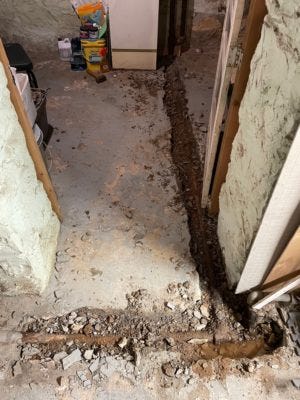
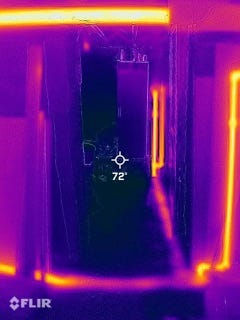
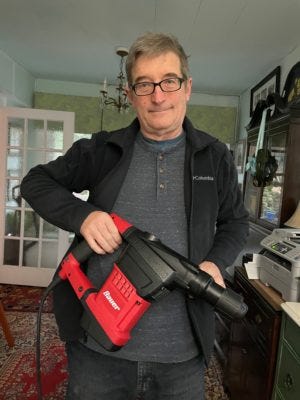
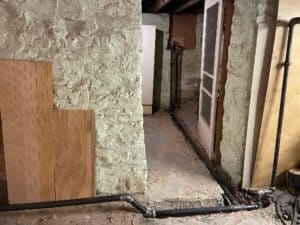
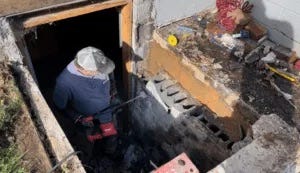
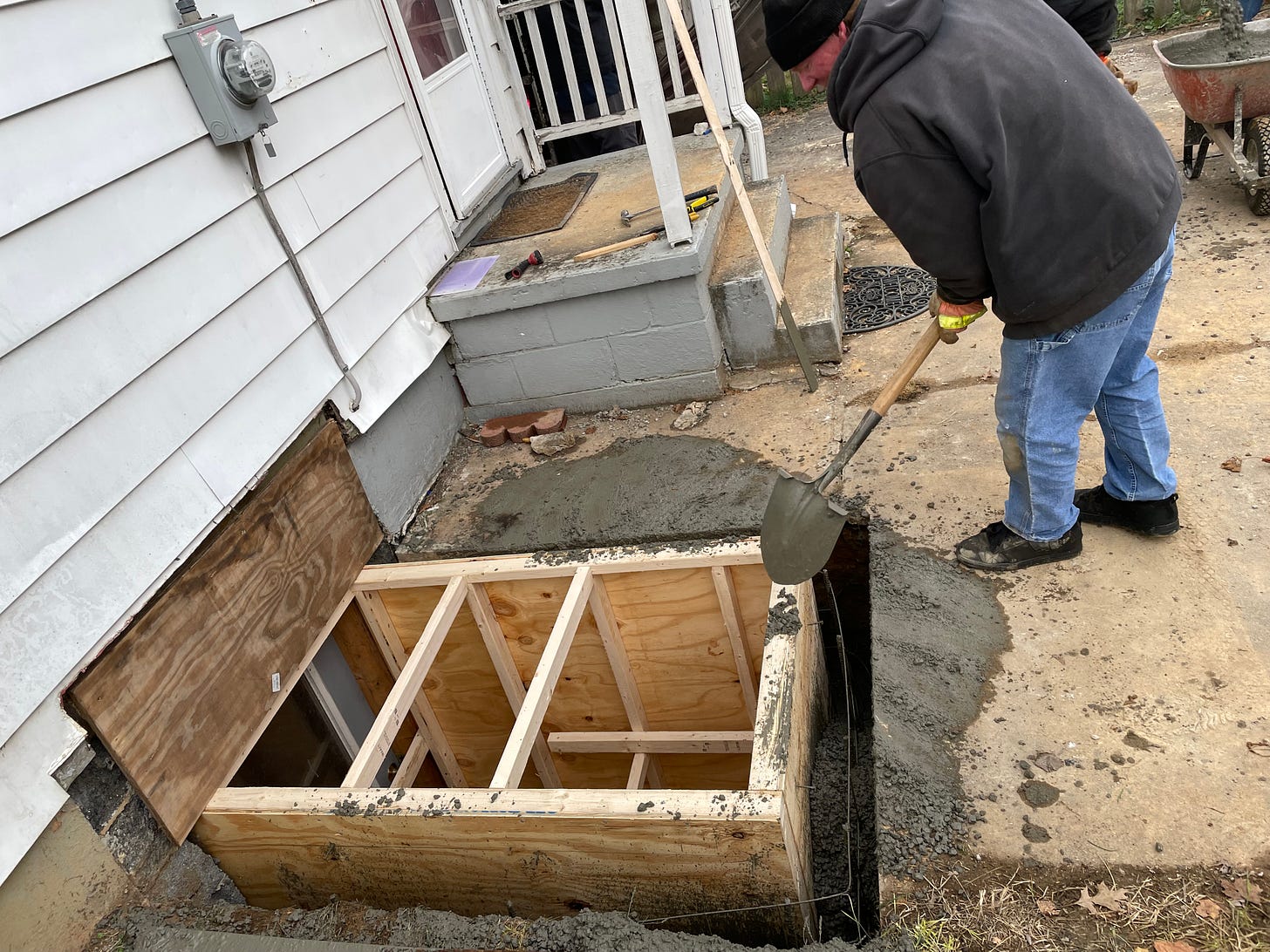
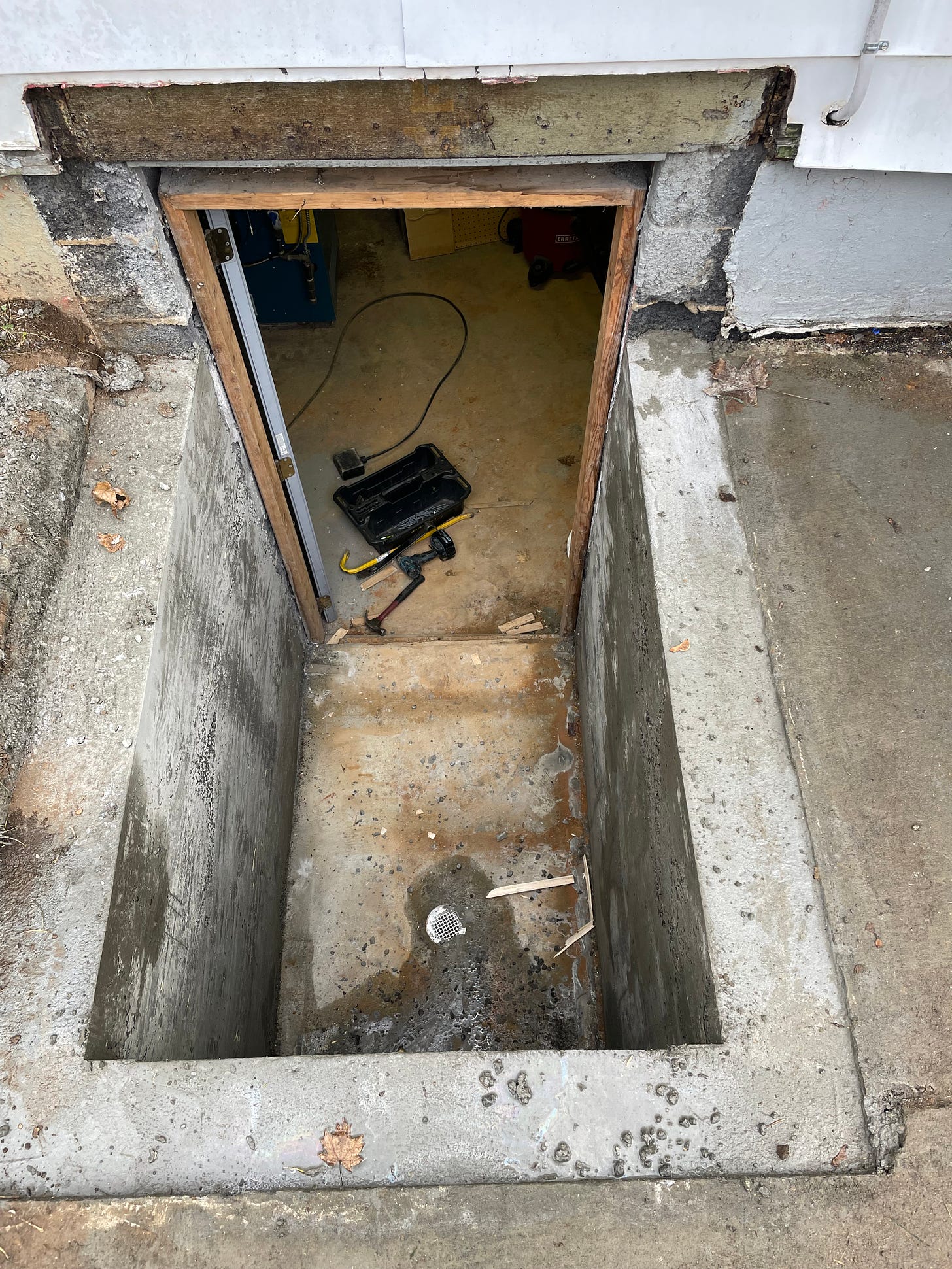
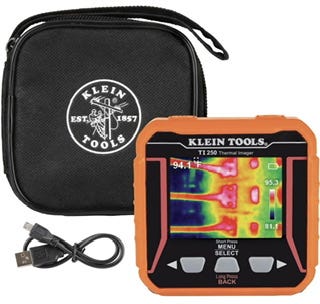

Thanks Mike for sharing these tips! I couldn’t see the pictures very well on a phone but I assumed this hammer tool lets you use a chisel bit for chipping through concrete. Love the idea of an inexpensive thermal imager but does the Klein tool have good enough sensitivity and resolution to be useful? Do you need to get the $500 hush res version? There weren’t many reviews. Do you know anyone that has one and how does it compare too yours? Can you share a link gif the one you have? Thanks again.